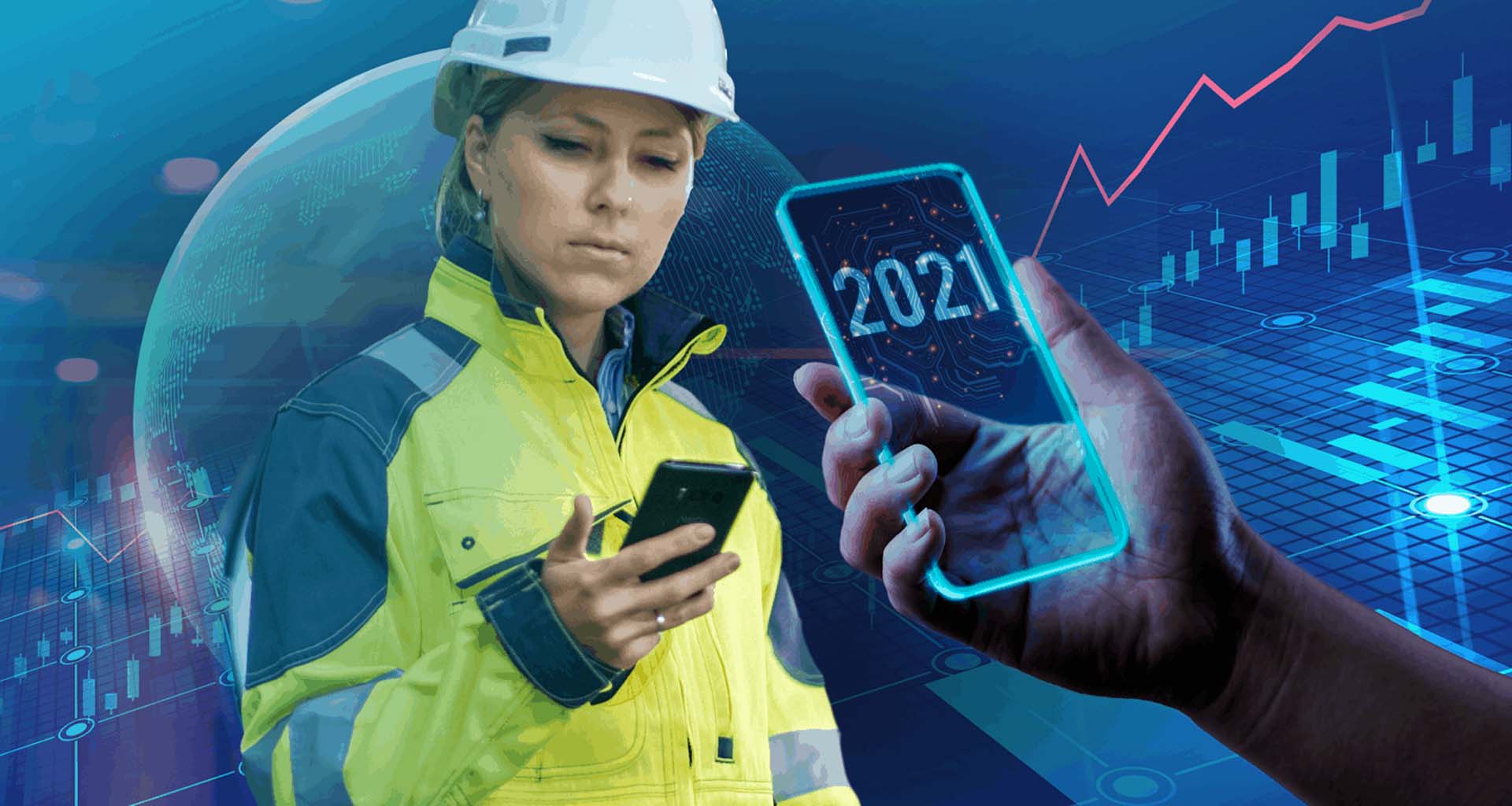Contents
In the last few years, companies have been investing in their field service function as a way to differentiate and personalize their services and improve overall operational efficiency. COVID-19 has resulted in a further increase in demand for service, with ServicePower reporting that 2020 field service trends resulted in field service organizations increasing investment in service workers by 72% to meet the rising demand. This is underlined by a January 2021 survey, where 65% of U.S. consumers reported requiring technician assistance during the current pandemic.
Going into 2021, new trends are emerging that are helping field services provide their customers with efficient service, while still keeping a firm eye on their bottom line in a challenging economic environment. Many of these trends are fueled by enabling technologies, as advances in artificial intelligence, augmented reality, and visual assistance are paving the way for new possibilities within the field service function. Let’s take a look at some of the trends that are expected to drive this year’s priorities and how AR remote support will accelerate them.
2021 Field Service Trends & How AR Visual Support Supports Them
The Shift to Outcome-Based Contracts Service Model
The need to limit customer downtime at all costs, coupled with the changes caused by the current crisis, is resulting in a new operating model for many field service organizations. Instead of following specific processes and protocols, field services are shifting to an outcome-based approach for their customers, where the priority is keeping customer equipment running. This simplifies contractual obligations for customers so that the field service provider takes whatever steps necessary to avoid issues or resolve them as soon as possible. According to a Gartner survey, 19% of service companies already offer these kinds of outcome-based contracts, and another 26% expect to do so within 12 months.
To deliver on the contracted outcomes, field service organizations are relying heavily on automated remote monitoring tools and remote assistance tools to ensure the equipment is always at peak performance. Issues can be identified early, and when the fix is relatively simple, it can be performed by on-site staff guided by remote experts rather than by engineers in the field.
Investment in Remote Support
As we move into 2021, service providers across every industry are grappling with how to continue providing service excellence for customers while addressing the significant safety concerns related to the ongoing COVID-19 pandemic. According to the January 2021 mid-pandemic survey, 65% of consumers agree that they would rather avoid technician visits unless absolutely necessary and two-thirds (64%) would be more loyal to companies that take extra technical support safety precautions. Going forward, field service organizations are implementing innovative solutions that help them serve their customers without requiring direct person-to-person contact – a model known as contactless service.
Download or report to explore the strategies to deliver visual contactless service
In the current environment, remote support has moved from a nice-to-have tool to a must-have solution across industries. The same survey indicates that the demand for remote assistance is high, with 52% of consumers willing to use remote guidance to resolve issues themselves due to safety considerations. While organizations have long been attempting to resolve customer’s issues remotely in order to boost overall effectiveness, more recently, the focus on enhancing remote support capabilities has been increasing with the emergence of new technologies such as IoT diagnostics, video, AR, and computer vision AI. Remote visual assistance brings the concept of remote support to a new level, enabling a greater number of use cases and ultimately a higher ROI.
Expectations of Revenue Generation
The division between sales and service activities has become blurred. Field service has become a source of revenue generation – and technicians have become a valuable resource for strengthening customer loyalty. To ensure customer expectations are met, technicians are now expected to empathize and engage with their customers, and to upsell additional products or services or recommend value-adds.
By using visual assistance to enhance sales through customer service, technicians can interact personally with the customer on a level that would be impossible to achieve without the advantage of vision. Technicians can recognize upsell opportunities, such as extended warranties if the customer’s warranty is about to expire, or replacement parts if they detect some wear-and-tear on current equipment. They can also provide highly personalized service, such as looking at the customer’s smart home devices and recommending upgrades. Not only do these new-generation technicians generate revenue, but they also become trusted resources for customers.
Reliance on Outsourcing to 3rd-Party Contractors
Many enterprises are choosing to outsource some or all of their field work to third-party service contractors as it provides broader geographic coverage, improved efficiency and cost, and even enhanced service offerings. The gig economy has made it even more efficient to find a third-party technician at a moment’s notice. In fact, approximately 50% of field technicians and service workers are expected to freelance by 2025. This increased reliance on third-party technicians has made it imperative to empower these individuals to do their jobs effectively and efficiently, because whether or not they are a permanent part of the staff, while on the job, they represent the face of the organization.
AR and AI-powered visual assistance can be used to help third-party technicians deliver quality service. With the newfound reliance on remote support, enterprises can “touch base” visually with their customers to gather the necessary details to ensure that the outsourced technician will be dispatched with the right equipment and skills for a successful first-time-fix. Visual assistance also allows a remote staff member to visually verify that the third-party technicians completed the job to the company standard, ensuring customer satisfaction and protecting brand reputation.
Remote AR Support for Field Service
Field services have come a long way from the height of the pandemic when 78% of organizations completely stopped deploying technicians to customer sites, according to the Technology & Services Industry Association. Today, field services are investing in enabling technologies to capitalize on the upcoming trends of 2021. Visual assistance technologies can help them improve outcome-based service, facilitate knowledge management, enhance remote support, drive revenue generation and smooth the third-party outsourcing process, by using the power of vision to connect with customers and technicians.






